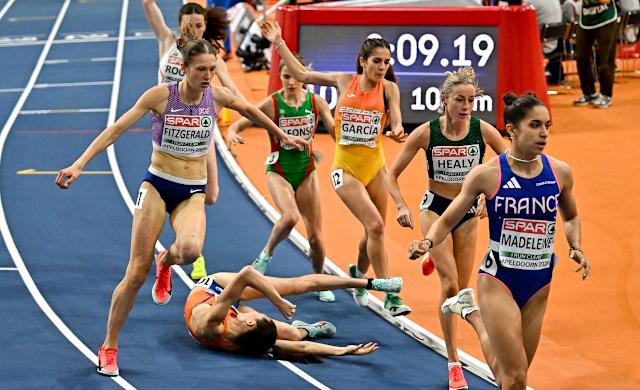In recent developments, a two-year-old child from the West Garo Hills district in Meghalaya has been diagnosed with a case of polio. This alarming news comes as a shock, especially since India was declared polio-free by the World Health Organization (WHO) in 2014. The infection, however, is vaccine-derived, not the wild poliovirus, and WHO has already begun an investigation into the matter. This raises significant questions about the nature of vaccine-derived polio, its implications, and the measures necessary to prevent future occurrences.
Polio is a disease that spreads easily and can make people very sick. It’s caused by a virus. For a long time, polio was a big problem in India. But in 2014, India said it had gotten rid of polio completely. The last time someone got sick from the wild poliovirus in India was in 2011.
Since then, India has worked hard to keep polio away. But recently, there’s been some worrying news. A person in Meghalaya, a state in India, got sick with polio. This polio didn’t come from the wild virus, though. It came from the vaccine used to prevent polio. This is called vaccine-derived poliovirus (VDPV). It doesn’t happen often, but it can occur when the weakened virus in the oral polio vaccine changes over time. This has made people worried again about polio in India.
Understanding Vaccine-Derived Polio: What It Is and How It Occurs

What Is Poliomyelitis?
Polio is a serious illness caused by a virus. It mostly affects young children under five years old. The virus spreads easily, usually through dirty water or food contaminated with poop. Most people with polio feel like they have the flu. They might have fever, tiredness, headaches, vomiting, a stiff neck, and pain in their arms and legs. In severe cases, polio can cause paralysis, which means parts of the body stop working. This paralysis is often permanent. Vaccines are very effective at preventing polio. That’s why children must get vaccinated. Clean water and good hygiene also help prevent the spread of polio.
The wild poliovirus type 1 (WPV1), type 2 (WPV2), and type 3 (WPV3) are the three different varieties of the virus. These wild strains have historically been the main cause of polio cases. However, since the effective global vaccination programs began in the late twentieth century, the prevalence of wild polio has significantly dropped. Unfortunately, incidents of vaccine-derived poliovirus are now emerging as a new threat, whereas cases of wild poliovirus have decreased.
How Does Vaccine-Derived Polio Occur?
Vaccine-derived polio is a circumstance whereby the weakened strain of the poliovirus used in the Oral Polio Vaccine (OPV) mutates to again become disease-causing. While OPV is highly effective at inducing immunity against polio, in very rare instances, attenuated viruses in it may circulate in populations with very low immunity. With time, this could mutate and result in cases of vaccine-derived polio.
The Situation in Meghalaya
The recent polio case detected in Meghalaya serves as a stark reminder of the ongoing vulnerability certain regions in India face against this disease. Despite the country’s significant progress in polio eradication, this incident highlights the importance of maintaining vigilant vaccination efforts, particularly in areas where coverage may be suboptimal. Read more- https://www.thehindu.com/news/national/centre-says-meghalaya-polio-case-is-vaccine-derived/article68547351.ece
The village of Tikrikilla, where the case was detected, has become the epicenter of immediate medical response. The challenge was well responded to by WHO doctors, who rushed to the spot to take samples and followed up with a detailed assessment. Their main task is two-fold: firstly, to know how the vaccine-derived virus circulated in the community, and secondly, to ensure that its further spread is checked.
This case underscores the critical need for continued vaccination programs and robust surveillance systems. It demonstrates that even in regions where polio has not been seen for years, the threat can resurface if vaccination rates drop or monitoring efforts relax. The situation in Meghalaya serves as a crucial reminder to health officials and the public alike about the importance of maintaining high immunization coverage and staying vigilant in the fight against polio.
Government Response and Public Health Implications
Meghalaya’s Chief Minister, Conrad K. Sangma, has emphasized the seriousness of the situation, stating that the government is closely monitoring the case and will develop an action plan to prevent any potential outbreak. The incident has sparked a renewed emphasis on the importance of sustained immunization efforts, even in regions that have been declared polio-free.
The recurrence of polio, even in a vaccine-derived form, highlights the fragility of public health successes. More than ever, the world needs to be careful about new infectious diseases like Mpox, which has experienced a sharp increase in cases worldwide. International collaboration in disease surveillance and vaccine campaigns is also necessary.
Future Outlook: Challenges and Opportunities
As India faces the challenge of vaccine-derived polio, it is essential to maintain momentum in the fight against all forms of poliovirus. The global health community must continue to support countries in strengthening their immunization programs and improving public health infrastructure.
Addressing the combined risks of polio and other new infectious illnesses like Mpox requires international cooperation. Because the modern globe is interdependent, no one nation can address these issues on its own. Global public health requires collaborative efforts, including the exchange of resources, knowledge, and best practices.
As the world confronts the dual challenges of polio and emerging diseases like Mpox, the importance of maintaining strong public health systems cannot be overstated. The road ahead may be challenging, but with concerted efforts, the goal of a polio-free world remains within reach. Also read: https://theaspectratio.in/health-fitness/dengue-outbreak-hits-bengaluru-hard-over-10000-cases-and-counting/



 By
By

















